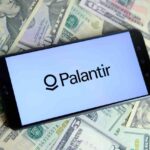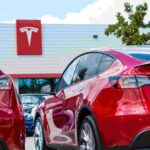After concluding a merger with Churchill Capital Corp IV, Lucid Motors now trades as Lucid Group, Inc. under the new ticker symbol “LCID.” The sale raises $4.4 billion, which the Californian upmarket electric vehicle (EV) manufacturer intends to utilize to accelerate its expansion and boost manufacturing capacity to capitalize on anticipated demand.
According to Lucid Chief Executive Officer Peter Rawlinson, the firm is on target to meet key goals, including producing 577 vehicles this year and up to 20,000 next year.
Despite the worldwide pandemic’s impact on automakers and their suppliers, including Lucid, the firm constructed a plant from the ground up in Casa Grande, Arizona, in less than a year.
Rawlinson, a former Tesla chief engineer, stated that the firm was “on track” to fulfill its forecasts following its Nasdaq launch. Rawlinson confirmed:
“Lucid Air (the launch model) represents the next generation of electric vehicles and creates new standards for interior comfort, range, efficiency, and power <..> We are on track to meet our projected deliveries for the next two years, and we look forward to delighting our customers around the world with the best electric vehicles ever created.”
Lucid’s opening week on Wall Street
After soaring out of the gates on Monday, when shares finished 11% higher at $26.83, the company is currently trading at $25.27, down 5.57% in the market on Tuesday.
When Lucid initially revealed its agreement with Churchill in February, it was the largest planned SPAC transaction at the time, dubbed “peak SPAC” by many on Wall Street and drew parallels to Tesla.
The firm expects revenues of $2.2 billion next year, increasing to $22.8 billion in 2026; at that point, it expects to be selling 250,000 automobiles per year, earning roughly $3 billion in profit and generating $1.5 billion in free cash, according to projections.
Nonetheless, despite the apparent institutional backing for the transaction, the company’s destiny will be determined by the devotion of ordinary shareholders, many of whom are new to investing and trading on apps.
EV competition
In particular, the demand for new passenger battery electric (all-electric) cars in Europe increased by 231.58% between Q2 2020 and Q2 2021, from 63,422 to 210,298. According to our data, demand for all-electric vehicles has tripled in the last year.
Between June 22, 2020, and June 22, 2021, EV manufacturers such as Nio Inc (NYSE: NIO) with 539.13%, Tesla (NASDAQ: TSLA) reaching 224.93%, and Xpeng (NYSE: XPEV) with 75.47%, all saw significant Return On Investment (ROI).
[robinhood]









